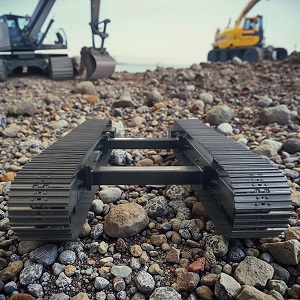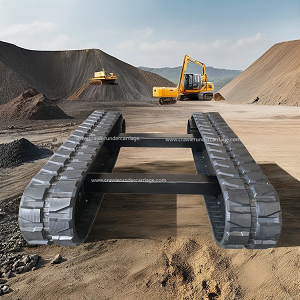In the field of heavy machinery, the quality and performance of the undercarriage play a crucial role in the performance and efficiency of the equipment. Among various types of undercarriage, rubber track undercarriage is widely favored due to its versatility, durability, and high adaptability to multiple working conditions. However, not all rubber track undercarriage are the same. Personalized customization is the key to achieve a perfect match between the machinery's specific applications and customer needs. Here are the steps we take to customize the appropriate rubber track undercarriage for you.
Understanding customer needs
The first step in customizing a rubber track undercarriage is to fully understand the customer's needs. This requires a detailed discussion to collect information about the expected use of the machinery, the working conditions and terrain, as well as specific performance expectations. For example, a customer using the machine on a construction site may require a different undercarriage configuration from one operating in a forestry condition.
Assess terrain and loading conditions
The terrain on which the machine will operate is a key factor in the customization process. Rubber track undercarriages are designed to provide excellent traction and stability on soft, uneven or muddy trails. However, the specific design and material composition may vary depending on load conditions and terrain type. For example, if a customer frequently works on rocky or rough trails, they may require a stronger, more wear-resistant steel track.
Choose the correct track width and length
The width and length of rubber tracks are important considerations during the customization process. Wider tracks distribute the weight of the machine more evenly, reducing ground pressure and minimizing soil disturbance. This is especially important for customers who prioritize environmental sustainability. Conversely, narrower tracks may be suitable for applications that require greater maneuverability in tight spaces. Customizing track size to the needs of a customer's operation ensures optimal performance and efficiency.
Integrate advanced features
Modern rubber track undercarriages can be equipped with a variety of advanced features to improve performance. For example, customers can benefit from an adjustable track tensioning system that eases maintenance and extends the life of the track. Additionally, incorporating anti-vibration technology and other features can improve operator comfort and reduce mechanical wear. Understanding the customer's specific needs will guide the selection of these features, ensuring a perfect match to their operational requirements.
Testing and Feedback
Once a custom rubber track undercarriage has been developed, it is critical to conduct thorough testing in real-world conditions. Gathering customer feedback at this stage allows for any necessary adjustments to be made. This iterative process ensures that the final product not only meets but exceeds customer expectations.
Customizing the right rubber track undercarriage is a multifaceted process that requires a deep understanding of customer needs, terrain conditions, and advanced engineering solutions. By focusing on these key areas, manufacturers can provide the perfect undercarriage solution to enhance the performance and efficiency of heavy machinery. The ultimate goal is to provide customers with a customized product that meets their unique operational needs, ensuring customer satisfaction and long-term success.








